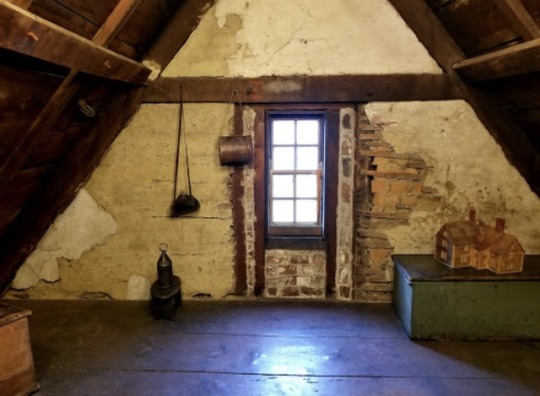Text
Blog Post 8
Final Blog Post
One of the most significant ideas I took away from this ILS course is how monsters are created boring from the minds of humans who want to release their anxieties and fears. Each creature peaked in a different time period from one another, which I most appreciate because each was allowed its own turn of attention. Also because of the fact that each creature had a different time period, that also meant they represented different worries as society evolved and evolved to where we are today. The evolution of the list of anxieties Americans had throughout time was something I very much enjoyed analyzing because the change was significant. This is also something I hope to continue to do with future horror movies, ideas and creatures. I look forward to continue to see how our anxieties change and develop as we find new things to fear and how we process these fears onto the creation of new monsters and supernatural creatures. The whole concept of creating these monsters to express our fears is the most interesting takeaway I got from the course because I had never been familiar with the concept fully. I realized there is multiple underlying reasons as to why humans enjoy setting themselves up to be scared through a horror movie or haunted houses, and the uncanny remains alive and active because of our extensive imaginations. The fear of the unknown will be a common trait passed among every human being, the way we find to interpret and express that fear is the ultimate journey I anticipate to see in the future of the uncanny, horrors, and supernatural creatures.
#ILS4180
0 notes
Text
Haunted Site Blog: Denver Botanic Gardens
Having grown up in Colorado, I was slightly familiar with the hot spots that were considered haunted throughout several of our cities. When I lived in Thornton I heard the stories about Riverdale road being haunted, I lived so close that I could’ve easily explored it but was always too chicken to. In Denver, I also knew about the Cheeseman park history and about the Stanley Hotel up in Estes Park, many of those mentioned are familiar haunted spots but one I was not aware of in having a haunting history was our final chosen site to visit for the project: Denver Botanic Gardens. As we analyzed in class, much of the haunted and uncanny usually resides in old, worn down and eerie locations, but the Botanic Gardens were just the opposite of this. I had been to the gardens twice before, without any ounce of knowledge on the haunted history behind it, and experienced a serene time there. People seemed to either be on dates there, taking pictures for photo-shoots or simply reading, all activities I found to be unbothered by any ghosts haunting the gardens, I even thought the gardens would be a perfect place for a picnic since you’re allowed to bring your own food in too. I never pinned it as a place where the supernatural might occur, but the gardens always do always close before its dark out so maybe the ghosts come out at night. When I did discover that the Botanic Gardens had some haunting history attached I wasn’t too surprised just because of the fact that it’s only three minutes away from Cheeseman Park, which as we know was a former cemetery as well. The Botanic gardens land is right in the middle of a thriving neighborhood, so how many of those surrounding houses are also on top of old cemetery ground? Have any experienced strange occurrences and do any of them know of the history to their neighborhood? The most recent unearthing of skeletons happened in 2010 from Cheeseman Park, which further peaks my interest in the surrounding homes. Many could still have skeletons forgotten from the moved cemetery underneath them, or many families could be experiencing the paranormal with no explanation as to why or who it could be. Although the stories from the Botanic Gardens are small and lightly detailed, I was very intrigued. The idea of being surrounded by the paranormal is very weird but the history and experiences are always richer and that was what I hoped my group and I would get out of our visit to the Botanic Gardens. All we knew from our research was that a hotspot inside the gardens was the Waring House. We knew the Gardens accepted the lore to the haunted history because they held ghost tours leading visitors throughout the house; this is also where staff first started reporting strange things happening. Unfortunately the tours are only held throughout October so the group and I weren’t able to set up a ghost tour, but it is marked for my calendar in October this year.
#MCST4180
0 notes
Text
Blog 7: Cabin in The Woods
Among the fears and anxieties we learned stemmed from the supernatural creatures we studied through out this course, many held various similarities among each other while also not being the same monster. But I found that all held one common theme to themselves as well. While a lot of these creatures were demonized and badmouthed, many evolved, either in the form of their appearance, in their representation of anxieties or just overall. The reoccurring theme of evolving would explain why The Cabin in The Woods would be the last film to wrap our studies up. The Cabin in The Woods greatly expressed modern technological anxieties because we have evolved to such a technology driven society. The uncanny for us currently is the fear of technology including the endlessness of the Internet and we are currently expressing the anxiety of that uncanny in our modern movies. Being watched, recorded and stalked has been taken to another level with incidents such as hacking, stealing your information or scamming online. Many other movies represent this too like Un-friended or Pulse, which both are movies that have to do with technological horrors. The movie incorporates little pieces of all kinds of horror we have examined over the weeks, such as demonology, which we examined just recently in The Exorcist, or the disruption of humanity, which was a common trait among all the supernatural creatures. The elevator scene reminded me of the idea of all the other types of supernatural monsters we unfortunately don’t have time to study about too, like the merman creature one character was obsessed with or any other type of abominations the human mind has created in order to express its darkest fears and desires.
#ILS4180
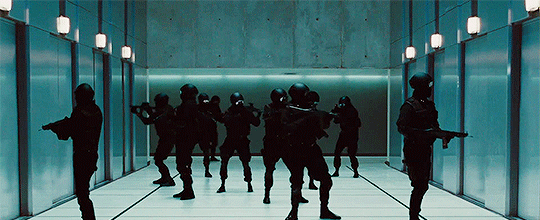
0 notes
Text
Blog 6: The Exorcist
As we know, in the 1960s women began entering the workforce and gaining a much more firm grasp on their liberation and abilities as women. The days of being sentenced to the role of a housewife were over and women had more options when it came to jobs. This meant traditional values and customs were being disrupted, women were becoming more sexually liberated or they were getting jobs and having someone else watch the kids. The entire evolvement was upsetting to a society that was so accustomed to running in a traditional style. Combine the growing anxiety of society with their heavy religious beliefs and we are left with mindsets that view the deterrence of gender, sexuality and morality as a diabolical evil. The evil is painted in a form where it’s presented that if you stray away from the cultural norms bad things will happen, people were so afraid as far as to think that it was the beginning of a corrupted America. The whole dynamic of possessed children such as Regan in The Exorcist is supposed to represent the ugly results of women being liberated. The female figure seeking such a new way of life is viewed, as monstrous and selfish, meaning that evil demeanor will be passed onto her offspring who will also be monstrous and evil (but only due to her lifestyle choices of course). We can conclude that most Americans can hold traditional values near and dear, and they’re so important that the disruption and change of them can cause a shift in society.
#ILS4180
0 notes
Text
Essay two:
Our Vampires (continued)
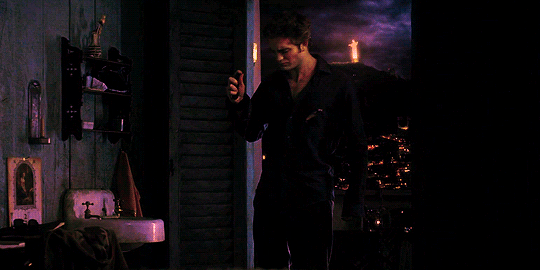
To go into further detail, when Orlok came into creation society currently held a fear of disease and were also anti-sematic. Orlok expressed those fears in every way from physical appearance to the level of fear people portrayed of him in the movie. Noseferatu represented very real anxieties of society back then, while Twilight holds more of a romantic fantasy and Queen of The Damned explored deeper with self and dealing with a disturbance of morality and discipline. The evolution of the vampire comes and goes with the evolution of society. Back then people were focused on disease, war and were heavily religious, in modern society we’re focused on acceptance of sexual orientation, race, or mental health issues and are, hopefully, more open minded then before. Modern vampires in media now represent these concepts and help form a bridge between enigmatic topics or beliefs. So because they represent new meanings and ideas, they’re image must adapt. Modern vampires might not be all evil and bloodthirsty as the earlier vampires; they now actually might be more emotionally advanced with a want for acceptance, love or other human desires. It’s easier to have vampires represent such important topics because people still hold the monster part of such a super natural creature as a barrier to separate themselves from the traits or beliefs that they find unappealing or may just not be familiarized with yet. As mentioned before they’re such humanized characters that their adaptability has a wide range allowing them to easily represent metaphors, best said by vampirologist Bruce McCllelland “the vampire itself is the product of the human desire for a scapegoat.” (Conroy, Catherine). One of the best and probably most adorable examples is the kids show Vampirina
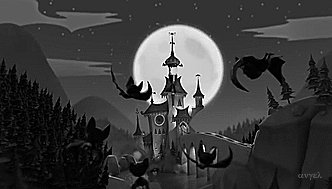
The show follows a little vampire girl experiencing the joys and tribulations of fitting in with humans and the acceptance of each other’s differences. Delving into it deeper, Vampirina and her family of vampires may in fact represent other cultures, races and traditions. Listening to just the theme song of the show strongly indicates the representation the show holds in place (https://www.youtube.com/watch?v=SckCTDIvAgM, link attached to take a listen). My favorite part of this is that the show is for kids but is already teaching them important lessons at a young age in the importance of open minded-ness, and that the unfamiliar doesn’t always have to be terrifying. Controversial ideas can be expressed in the show in a fun and unoffending way because the vampires are monsters. Whether we imagine them as monsters, or fake creatures, we make a full loop back to the beginning that they are not human and because of that they can represent tough metaphors in “a way that makes it accessible but is fun.” (It, Now You See).
undefined
youtube
Works cited:
Conroy, Catherine. “Blood Simple: How Society Dumps Its Problems on Vampires.” The Irish Times, The Irish Times, 28 Oct. 2017, www.irishtimes.com/culture/books/blood-simple-how-society-dumps-its-problems-on-vampires-1.3265803.
It, Now You See. “The Power of the Vampire Myth.” YouTube, YouTube, 1 June 2018, www.youtube.com/watch?v=_ahqffbTc-g&t=550s.
Junior, Disney. “Theme Song | Music Video | Vampirina | Disney Junior.” YouTube, YouTube, 7 Sept. 2017, www.youtube.com/watch?v=SckCTDIvAgM.
Science, Bruce. “How Corn Created Dracula.” STORAGE ROOM No. 2, STORAGE ROOM No. 2, 27 Oct. 2015, www.storagetwo.com/blog/2015/10/how-corn-created-dracula
#ils4180
0 notes
Text
Essay two:
Our Vampires
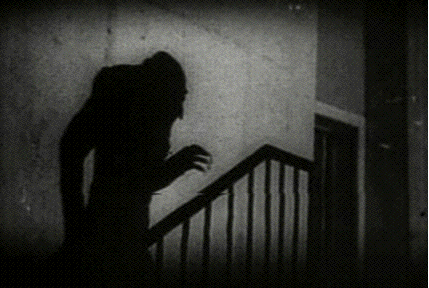
During the 17th century in Eastern Europe hysteria spurred when superstition of dead men, men who had been buried underground for several months, were returning from the tomb. They were inhibiting normal human characteristics such as walking and talking, but the horrifying part was the uncontrollable lust they held for draining the blood of men, animals and entire villages. Often causing death upon their victims, these monsters were to be recognized as vampires. The birth of many other supernatural monsters are also dated back to very early times, often back in times where sickness and natural disease were unexplainable and still misunderstood. And as we’ve seen numerous times before, when humans don’t have an explanation for the unknown, a finger is pointed (usually to a supernatural creature) to explain the cause and the reasoning of something so foreign and evil. One of the best examples of superstitious accusations is the explanation society held for the vitamin deficiency known as pellagra, which back then was very closely linked to vampires. Those affected with pellagra displayed symptoms such as sensitivity to sunlight, which also resulted in pale skin due to the avoidance of sun, avoidance of sunlight being closely tied as a strong vampire characteristic. When bodies were dug up in search of evidence of vampires in the 17th century, the blood around the mouth and the growing hair and nails were taken as sure signs that the corpses were in fact alive, science was not yet around to debunk the superstition. Evidently said by Science in the article How Corn Created Dracula, “vampire legends may have arisen as an explanation for a frightening illness that people back then encountered every day.” (Science, Bruce). Insomnia was also a persistent symptom of pellagra that linked into the belief that vampires were only ever awake at night and that was the time they feasted on victims. Over time many myths and stigmas continued to follow vampires but attitudes towards them changed and numerous other traits were adapted. One of the earliest film vampires is Count Orlok, a creature with disturbing features and a body closely resembling a corpse, who was not likely part of a high social class in his film. Some years later we’re introduced to Dracula, in comparison to Orlok, he is a very cleaned up gentleman that seems to be very wealthy. Several more years’ later vampires are in numerous films with many being distinctly different from one another but all sharing yet another evolved appearance. They became viewed as sex symbols because of how passionate and lustful they came across while looming over bare necks. Erotic scenes in films could only go hand in hand with attractive characters, which is part of the reason why vampires transformed into an appealing dangerous fantasy. A combination of features still present in modern vampires from the early times includes the thirst for blood, immortality, a missing reflection and abnormal strength and speed. As mentioned in class before, vampires seem to be at the top of the food chain among the rest of the supernatural creatures and I completely agree. I view vampires as the most malleable creatures for films and other medias because they can so easily relate to or attempt to pass off as humans, they are so popular among filmmakers because of “its versatility of a creature” (It, Now You See). A great example of this is the transformation of vampires from a monster like Orlok to a mysterious but enticing vampire like Edward. The two are nothing similar but the dramatic change between the two is not puzzling and both hold their own representation of what a vampire exemplified either back then or currently.
#ILS4180 (essay continued in second post)
0 notes
Text
Blog post 5: The duality of Man
Shying away from the uncanny has meant shying away from dark deformities and repressed notions. We were presented that our unconscious mind can be composed of repressed ideas that might’ve never come into fruition, better yet known as the Jungian shadow. Our unconscious mind may also hoard weaknesses that we never want to display to the world in fear of mockery or being shut out, it also very well holds the animalistic desires and instincts that we don’t give into (because they are just a wild crave of destruction). What makes up our repressed shadow is usually stuff we lock away in a tight drawer, in a sense it’s a beast hidden within the self, only to come out through self-destructing tendencies, but also represented to come out as a werewolf. Humans have been bred to fear wild animals, so when concluding that we also hold a wild animal inside we realize there is also fear of the untamable beast inside of us. The change from man to wolf and back is a significant transformation because the repressed psyche has finally unleashed, not just the harmless weaknesses of a human, but also a raging beast. The raging beast doesn’t just release the pressure a person may hold to their own self, but it also releases big societal pressures. Such pressures include hiding the ugly parts of yourself and only displaying the appealing best versions. I believe the repression is not just a barrier we must be afraid of, but more of a bridge that must be built between our shadow and our true self. Accepting and identifying the unconscious mind can mean working on bettering ourselves, which for some may be another fear exemplified in the wolf all together.
#ILS4180

0 notes
Text
Blog 4 Zombies
We learned that Vodou resulted from forced amalgamation of beliefs and traditions that slaves adapted after having to unwillingly come to America. So not only were slaves stolen from their land but also they were limited to certain rules, beliefs and mindsets where they weren’t allowed the slightest bit to be themselves, as a culture or as a person. It would only make the most sense to any American that the stolen slaves might be angered, and so the idea of them rebelling and revolting was in fact not too far fetched. To express the fears of slave rebellion further the zombie was created in cultural representation of not just slaves or African Americans, but also immigrants, POC, and even modern women. I believe the nature that zombies lack intellect, are voiceless and have no will stems from the concept that slaves had no freedom as well, they were never allowed to be their own self or what could’ve been of them. Slaves, and as well the other representations above, weren’t able to get educated, vote or decide a different lifestyle for themselves for the longest time because the people who wanted to remain powerful over them would, of course, never allow it. Media and films like White Zombie confirmed a revolt was an irrational worry to any southerners or northerners in ownership of slaves by displaying the zombie as mindless creatures that only needed demands. Neither the slave nor the zombie could think for themselves to possibly escape, at least that was the portrayal meant to get across to viewers of that time.
#ils4180
0 notes
Text
Blog Post 3

A demise that often came along with being a Vampire was the eternal damnation of being alone and remaining hidden from the rest of the world, at least that used to be the rule that the vampires followed. In Queen of The Damned, Lestat gives a new meaning in what its like being a modern day vampire, and the entirety of the movie also gives vampires a refreshed and revised demeanor. In the film Lestat tries to suppress his loneliness but that effort is what leads to his untamable rebellion against the other vampires. How can an enticing powerful being be expected to roam the world for eternity without building meaningful (or any) relationships at all? Especially with billions of (possibly also lonely) humans roaming the world as well. Being alone can induce exploring our darkest selves and thoughts, so even if a vampire isn’t human, they can also succumb to such undesirable circumstances. Lestat also represents the disturbance of order; he disturbed the slumber vampire’s keep around humans and disturbs their secrecy. In the past we might have been used to the vampire disturbing humans, not vampire disturbing vampires. When reflecting between Dracula & Queen of the Damned we can see the evolving behaviors towards vampires. Humans transitioned from fear and shrieks towards vampires to more of a curiosity and glorification of them & their lifestyle. In the past it wasn’t often that we’d see a human girl begging to become a vampire, but now the yearning for wanting to be like a vampire and the glorification of them is found easily. Yet without that curiosity we wouldn’t be able to view the lust and wild urges a vampire has around a human, or even more specifically a human female. There is also the undeniable transition and cleaned up image the vampire has undergone when you compare both Dracula and Lestalt, both remain powerful creatures that can easily threaten any human and their peace.
#ils4180
0 notes
Text
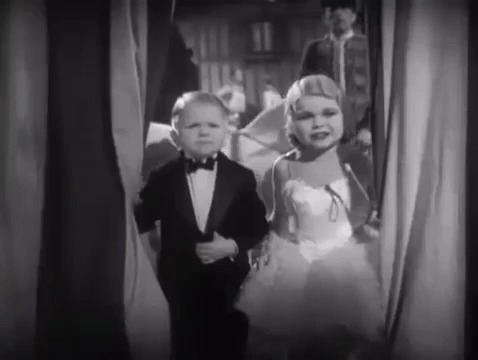
Essay 1: Option 2
A World of Freaks
Since the earliest of times as a society we’ve adapted this creation of separation among us where one person wants to be better than the next. When we surround ourselves with others that are up to standard, we alienate everyone else. Whether we practice the separation purposely or not it strongly exists, there is the rich vs. the poor, the able vs. the disabled and even the ugly vs. the beauty, and it doesn’t stop there. Freaks is a film that exemplifies these economic, biological and cultural battles and is a film that delivers a different type of horror than what a paranormal or gore horror presents. If there has been a group that has suffered alienation from all corners of society it would most definitely be the Freaks. Almost right in the beginning of the movie we see the disturbance and repulsion “normal” people withhold towards freaks, they gawk and scream in horror right in the faces of the freaks, dismissing the fact they are also humans with feelings as well. I think this is where a lot of our horror towards their abnormalities was born. We realize freaks are so similar to us because they are humans too, then we gasp in horror when we also realize that their deformities could easily happen to you or someone you love. The alienation and ganged repulsiveness society suppresses freaks to is something no one else wants to experience, we find interest in their abnormalities’ but not interest their day to day life and struggles. I think we also find comfort in seeing someone else’s misfortunes because theirs is on display all the time, while the more normal ones of us can hide our misfortunes better. In Freaks we see the glorified beauty standards that you must be normal and attractive to be capable of something like love and marriage. A small man might not have the capabilities of pleasing the way a normal man could, or a women getting a ring because of her looks rather than her sincerity because of we like what we see. It also didn’t matter if you were a freak with money, in the eyes of society (or in the films case, in they eyes of Cleopatra), a freak was freak, still someone hideous that could not reach the level of normalcy no matter how hard they wanted.
#4180
Works Cited:
Freaks (1932) / Monstros (1932) - Legenda Em Português (ative A Legenda) - Filme Completo
Você conseguir! - https://www.youtube.com/watch?v=OdKJaQS5-Fo
0 notes
Text
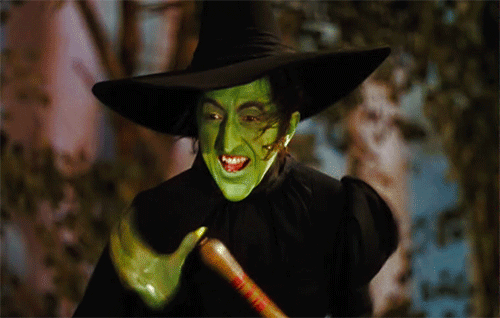
Witches aren’t bitches
Although witch accusations and witch hunts have been long dead, the demonization of these beings has not died with them. Witch stigmas and myths are incorporated in many media’s, whether it be movies or books, a lot of them have still followed the ideas and misconceptions we created surrounding witches. One of the best examples is The Wicked Witch of The West, during my research I found that L. Frank Baum never claimed or intended for her to be green skinned. When the film was first made in color, it just so happened that was the way she appeared, ever since then the image of green skinned women adhered to our stigmas. The witches from Hocus Pocus also contribute well to our misconceptions; evil women, with pointy noses and pointy hats, that ride brooms & have black cats. Fun fact; the pointy style hat developed when upperclass Europeans wore that style during the 15th century. The style was then picked up by commoners, people who were poor country workers, that were also the same people later on accused of paganism and witchcraft. Black cats were believed to be the spirits of witches recreated in animal form, other beliefs are that they were just supernatural helpers of witches. Although we humans like to point fingers for unexplainable things, I can’t help but wonder what might have grown from a better conception of witches. What might’ve been alternative actions to have taken against witch accusations and punishments?
#MCST4180
0 notes
Text
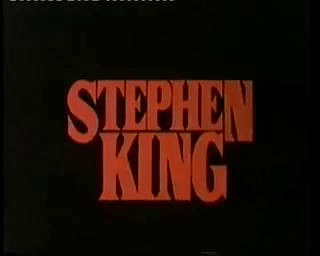
Blog Post 1:
Stephen King highlights that we all have fears, whether it be irrational fears or well thought out fears, we all hold something to our heart that we’re scared of. And we don’t have to be crazy to rationalize those fears either.
“Our emotions and our fears form their own body”, to an extent we see, or even feel, that they have become this whole thing that may have the power to engulf us (if we let them). Normal human processes are that we find a way to deal with these fears. One way we like to believe we face these fears are through horror movies or any other event where we can pay and feel in most control of our amount of fear. It’s all about the control. We choose to turn on this movie, and sit in the dark because we know we can easily turn the lights back off and those monsters or fears will be gone.
Horror films also give us the space to judge and think of ourselves highly. We like to think we’d make better decisions than the character in the movie, that we’re smarter, faster or that we would never have been in that situation. But are we really all that that we think we are?
#ILS4180
2 notes
·
View notes
